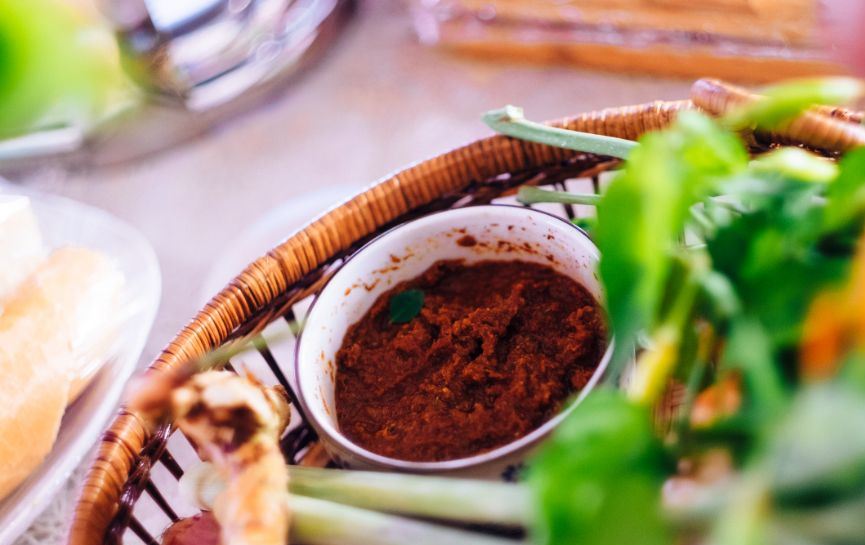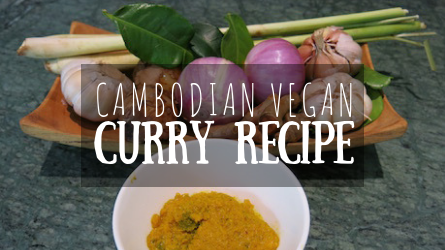Kroeung
គ្រឿង
Kroeung is a generic Khmer word for a number of spice/herb pastes that make up the base flavors of many Khmer dishes. Such dishes are often dubbed with the "-kroeung" suffix. Kroeung is traditionally made by finely chopping the ingredients and grinding them together using a heavy mortar and pestle although mechanical food processors can be used in modern kitchens. Various ingredients, depending on the dish and the taste of the cook, can be pounded into kroeung. The eight most commonly used are lemongrass, magrut lime zest and leaves, galangal, turmeric, garlic, shallots, dried red chillies and various rhizomes (lesser galangal, fingerroot, Kaempferia galanga, etc.). This herbal paste is essential for preparing Khmer dishes in order to create the authentic flavour. Kroeung has two main categories: "individual kroeung" and "royal kroeung". Individual kroeung are dishes which may call for extra ingredients specific to the dish, resulting in a unique-use kroeung. Royal kroeung on the other hand is fairly standardized. The various types of kroeung can be further distinguished by their colors, specifically, yellow, green and red. The color kroeung are commonly used to make stuffings, soup, and stir-fry.
Source: Wikipedia

:max_bytes(150000):strip_icc()/kroeung-cambodian-marinade-spice-paste-3030372-hero-01-107ac3b404c346bcae3dcc8a25f8b465.jpg)






